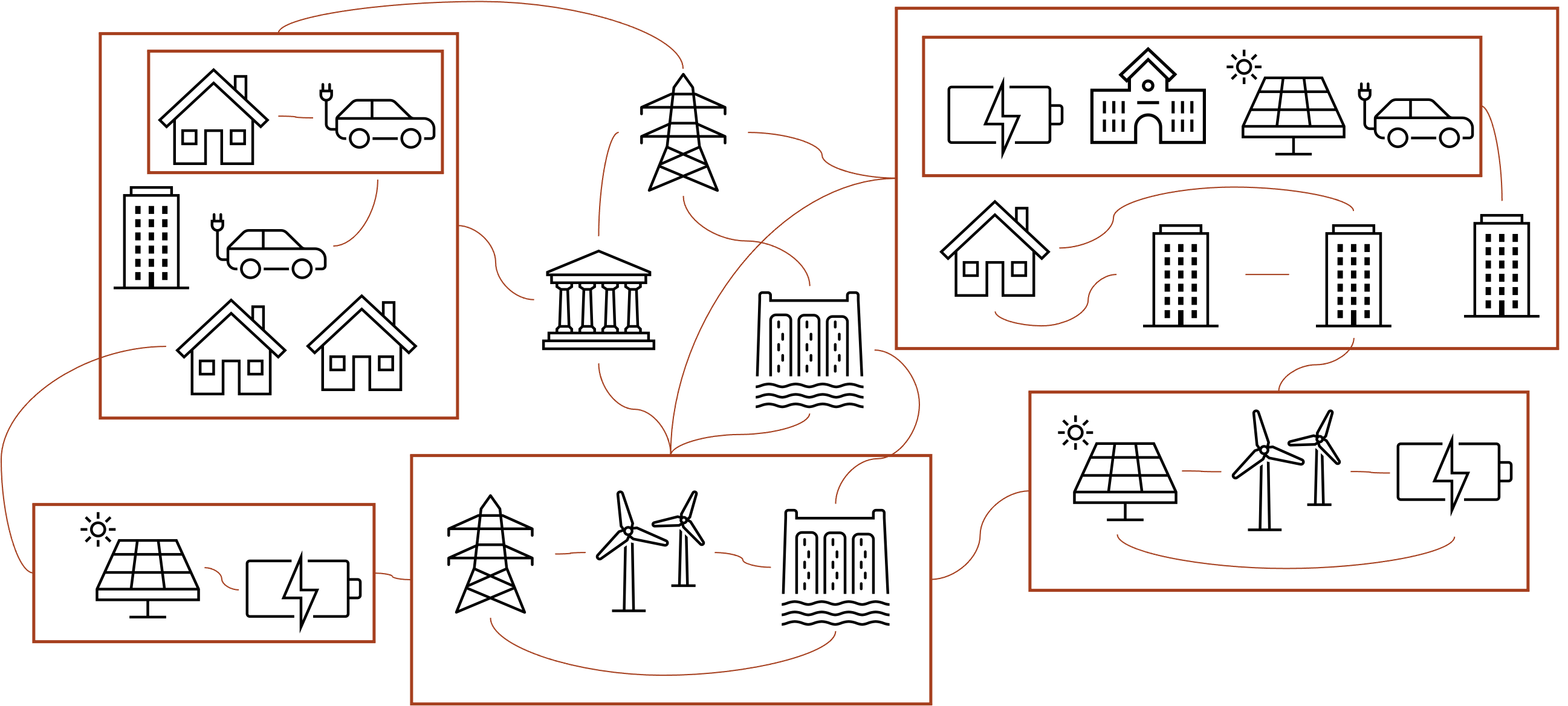E-COMP Research Thrusts
The Energy System Co-Design with Multiple Objectives and Power Electronics (E-COMP) Initiative is reshaping the future of energy systems by addressing challenges in power-electronics-dominated grids. This initiative is organized into three interconnected research thrusts, each aimed at tackling specific scientific and technical challenges.
Thrust 1: Theory and Modeling
This thrust develops fundamental theories and advanced models to characterize the dynamics and stability of energy systems dominated by power electronics. Key focus areas include:
- Power Electronics Mixed Dynamics Theory: Developing new theoretical methods for understanding the dynamic interactions and stability margins of power electronic-dominated systems, including mixed dynamics from traditional rotating machines and power devices.
- Advanced Modeling: Creating high-fidelity models of power electronics technologies, including real-time testbed, reduced-order models, and grid planning models for efficient integration into co-design and simulation workflows. Advance modeling of multi-terminal PEL systems for transmission and distribution.
- Practical Applications: Leveraging methods such as dynamic mode decomposition and Laplacian-based analysis to predict system stability, assess risks, and design advanced control.
By developing high-resolution models and next-generation analysis methods, Thrust 1 provides critical insights into the stability risks and behaviors of systems integrating diverse power electronics technologies.

Thrust 2: Multi-Scale, Multi-Objective Co-Design
 This thrust develops innovative optimization frameworks and tool-suite for the co-design of energy system infrastructure and operations. Key features include:
This thrust develops innovative optimization frameworks and tool-suite for the co-design of energy system infrastructure and operations. Key features include:
- Hierarchical Co-Design Frameworks: Addressing multiscale system dynamics, integrating uncertainties, and balancing competing objectives like cost, resilience, and operational efficiency.
- Advanced Algorithms: Creating scalable, data-driven algorithms to design and operate complex energy infrastructure systems with high penetration of inverter-based energy resources with resiliency guarantees.
- Software Prototypes: Delivering modular co-design tools with APIs and interactive visualization capabilities, enabling practical applications across various use cases.
This work provides tools for optimizing energy systems holistically, accounting for technical and operational complexities.

Thrust 3: Multi-Entity Simulation
This thrust focuses on simulating the interactions between localized, optimized entities and the broader energy system. Key activities include:
- Simulation Architecture: Developing a modular, agent-based simulation platform to evaluate the impact of localized decisions on system-wide outcomes.
- Policy and Incentive Analysis: Exploring how regulatory and market mechanisms influence system performance, affordability, and resilience.
- Comprehensive Case Studies: Applying the platform to real-world scenarios, such as large new generation/load integration and community energy planning.
By integrating advanced modeling and optimization into a broader simulation framework, this thrust provides insights into system-level behaviors and informs strategic decision-making.



